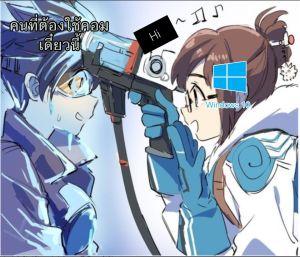Windows Update
Windows Update: The Uninvited Party Guest That Always Shows Up at the Worst Time
| 💩 Shitpost Warning: | This article has been scientifically proven to be only marginally canonical. Enjoy at your own risk. Reader discretion is advised: This post contains questionable logic, dubious facts, and a high probability of absurdity. |
|---|
In the grand realm of modern technological inconveniences, one particular contender stands out as the ultimate party pooper: Windows Update. It's the guest that arrives unannounced, disrupts your plans, and overstays its welcome without remorse. If you've ever wondered why your PC decides to throw a surprise update party just when you need it most, let's take a satirical journey through the enigmatic world of Windows Update.
The Unavoidable Intruder: Remember the good ol' days when you needed your computer the most, say, to urgently complete that important presentation, finish a critical report, or maintain your crypto mining rig's unrelenting work ethic? Well, fret not! Windows Update is here to save the day by forcibly restarting your computer, thus giving you an involuntary break. Because, let's face it, what better time to disrupt your workflow than right in the middle of a creative epiphany or a vital online multiplayer match?
The Origins of Uninvited Updates: Microsoft, in a stroke of genius, decided that Windows 10 should be more than just an operating system—it should be a service. And what's a service without updates? So, they introduced Windows Update as a mandatory feature to keep your system patched, secure, and well-versed in the art of inconvenient timing. They wanted to ensure that no one could forget the fateful dance of the spinning update wheel.
The Patchwork Quilt of Misfortune: Ah, the thrill of seeing that promising notification: "Updates are available! Your computer will restart outside of active hours." A glimmer of hope that perhaps this time, the update gods have heard your plea for a seamless update experience. But let's be honest, those "active hours" are more elusive than a unicorn at a tech convention. The moment you walk away from your PC to grab a snack, it's as if Windows Update sniffs out your absence and seizes the opportunity to assert its dominance.
The Mining Meltdown: For our cryptocurrency aficionados, the dance between Windows Update and mining operations is truly a match made in inconvenience heaven. Picture this: you've set up your mining rig to churn out digital gold while you sit back and watch the profits roll in. But wait, what's this? Windows Update has decided that now is the perfect time for a forced restart. Your mining dreams crumble faster than a Jenga tower at a toddler's birthday party.
A Brave New World: As we bid farewell to the era of service packs, we welcome the brave new world of ever-present updates. There's no escape, no sanctuary from the beeping reminder that your PC yearns for a reboot. So, what's a user to do? Embrace the chaos, embrace the surprises, and perhaps invest in a mini fridge for your snacks, because Windows Update has declared itself the party planner of your computing life.
In conclusion, Windows Update—a saga of uninvited disruptions, unexpected restarts, and the relentless pursuit of optimal timing—has solidified its place in the annals of tech-infused humor. While it might seem like an unsolicited guest at your computing soirée, remember, it's here to ensure your system remains secure and up-to-date, even if it means doing so at the most inconvenient times imaginable. So, let the updates roll and may your virtual endeavors withstand the whims of the great Windows Update scheduler.
Delivery Optimization
Windows Delivery Optimization (WDO) is a feature introduced in Windows 10 that aims to improve the efficiency of software updates and app downloads. By leveraging peer-to-peer technology, WDO allows users to download updates from other devices on the same network or from nearby devices over the internet.
How WDO Works
- Peer-to-Peer Transfers: WDO enables users to download updates from other devices on their local network, reducing the load on Microsoft's servers.
- Internet Transfers: If no suitable peers are found on the local network, WDO can download updates from other devices connected to the internet.
- Privacy Concerns: Initially, WDO was criticized for potentially sharing sensitive user data over the internet. To address these concerns, Microsoft introduced privacy settings that allow users to control whether their files can be shared with other devices.
The Controversy Surrounding WDO
The initial release of WDO faced backlash due to concerns about privacy and data sharing. Some users were concerned that their personal files might be shared with strangers over the internet. In response to these concerns, Microsoft implemented changes to WDO, including:
- Default Settings: Microsoft adjusted the default settings to limit file sharing to devices on the same local network.
- Privacy Controls: Users can now customize their WDO settings to control which files are shared and with whom.
The Benefits of WDO
Despite the initial controversy, WDO offers several benefits:
- Faster Downloads: By leveraging peer-to-peer connections, WDO can significantly speed up software updates and app downloads.
- Reduced Network Load: WDO can help to reduce the strain on Microsoft's servers, especially during peak times.
- Improved User Experience: WDO can provide a smoother and more efficient update experience for users.
Conclusion
Windows Delivery Optimization is a valuable feature that can improve the performance and efficiency of Windows updates. While there were initial concerns about privacy, Microsoft has taken steps to address these concerns and make WDO a more secure and user-friendly experience.

